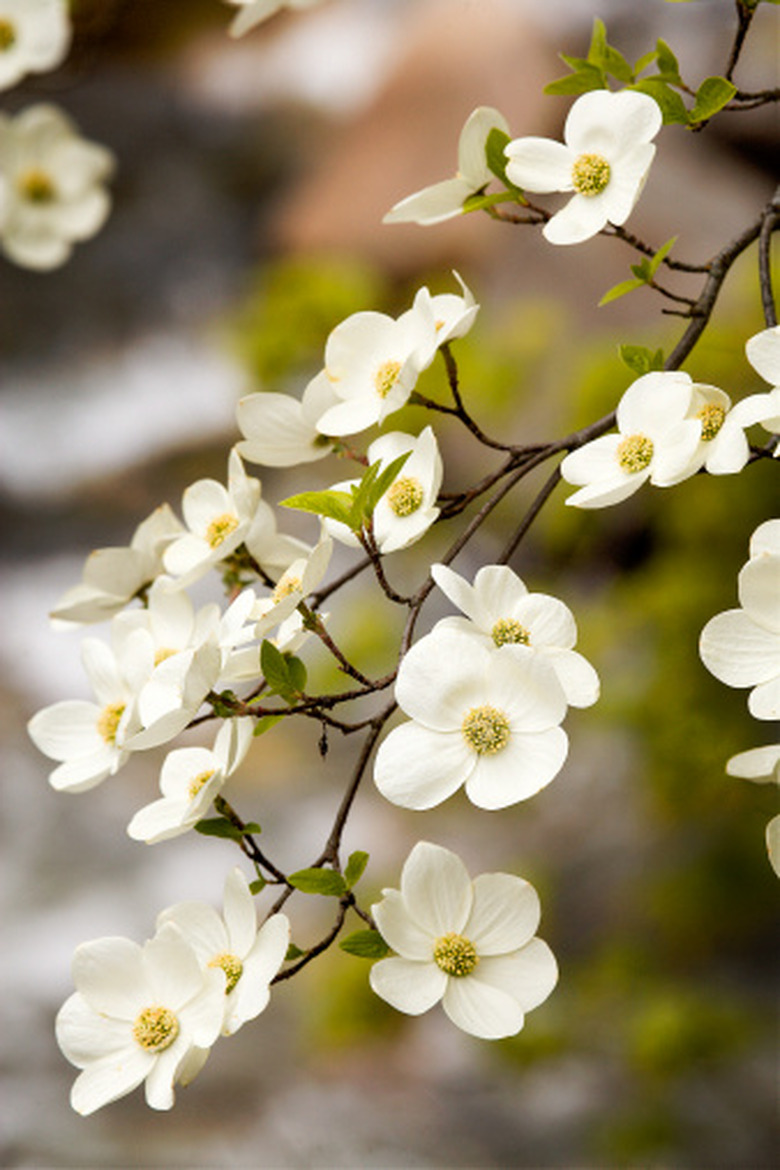How To Prune A Pagoda Dogwood Tree
Things Needed
- Gloves
- Pruners
- Ladder
- Hand saw
- Rake
Pagoda dogwoods are large shrubs to small trees. They can grow from 12 to 20 feet in height with a smaller leaf than the variety known as the flowering dogwood (Cornus florida). Flowering dogwood is native to the U.S. but not hardy in the north. Pagoda dogwood is hardier and suitable for zones 4 through 7. Pagoda dogwoods bear small white flowers that turn into dark purple fruits. Most plants need a little pruning every season or two. Dogwoods need very little unless you are trying to keep them a certain size. For the most part, dogwoods just need an annual cleanup to get ready for the next blooming season. Dogwoods should be pruned when they are dormant.
- Pagoda dogwoods are large shrubs to small trees.
- Dogwoods should be pruned when they are dormant.
Step 1
Put on gloves when handling sharp objects to protect your hands from cuts and slivers. Use the pruners to clear any dead, diseased or broken wood from the tree. Dispose of diseased wood in a fire or bag it for the garbage. The rest can be used for tinder after it dries. As you cut, remember to be judicious. You can always come back and cut more, but if you cut too much it will take time to grow back. Step back often and reconsider your cuts.
- Put on gloves when handling sharp objects to protect your hands from cuts and slivers.
Step 2
Locate the graft on the tree's trunk. Pagoda dogwood are propagated using root stock grafting. The graft will be a rougher patch completely around the diameter of the trunk. Use the pruners and cut off any branches that have grown below the graft. They will not be true branches of a pagoda dogwood, but will be from the alien rootstock. If necessary, cut lower limbs that will be in the way of mowing.
Step 3
Set up the ladder so you can get to the top and upper story of the tree. Continue removing dead wood and begin removing crossed branches at their source. Make clean, slightly angled cuts and never cut into the connecting branch or trunk.
- Locate the graft on the tree's trunk.
- If necessary, cut lower limbs that will be in the way of mowing.
Step 4
Use the hand saw on interior branches that are damaged or are rubbing on other branches. The interior growth will be heavier and woodier. The idea is to clear some of the tangle in the center of the tree. Open branches can grow better and will be less susceptible to disease. It will also allow more sun in.
Step 5
Top the tree if necessary. Never remove more than one-third of the crown. If the tree has been neglected and the profile really needs to be diminished, use a couple of seasons to trim it down. Cutting too much at one time can shock the tree and affect its health. Keep the exterior limbs branching out in an alternate manner to keep the shape. Take off any that ruin the shape. Check your work by visualizing through the tree for airiness, assessing height and overall shape of the tree.
- Use the hand saw on interior branches that are damaged or are rubbing on other branches.
- Cutting too much at one time can shock the tree and affect its health.
